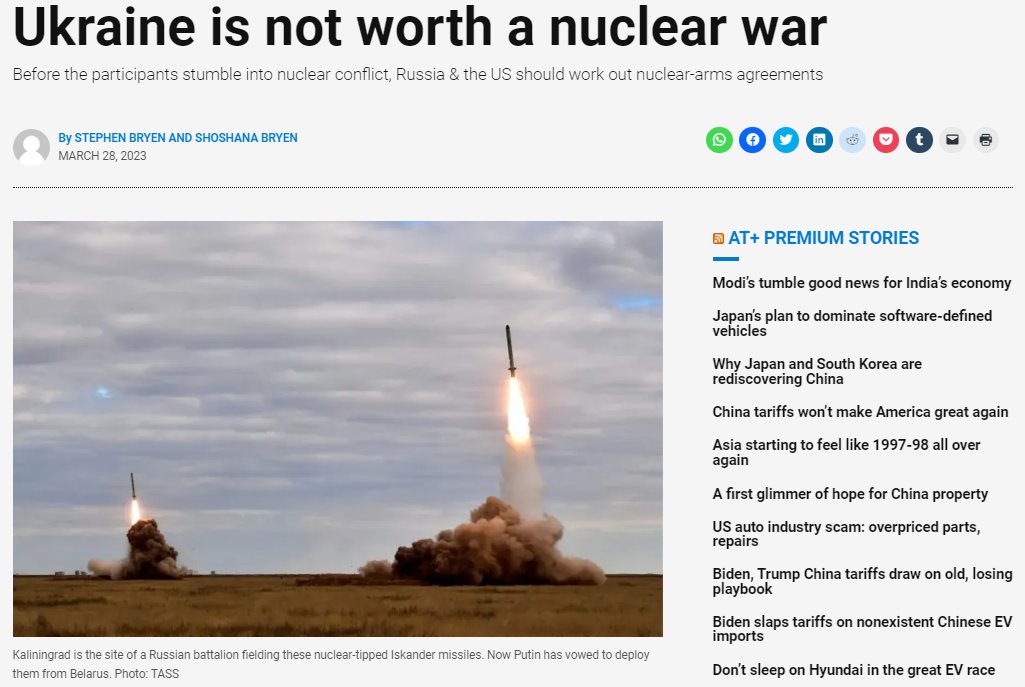Within a decade, hybrid warfare against the West and Ukraine escalated into the largest war in Europe since WWII. To grasp how a demographically and economically smaller Russia achieved this, we need to look at the underlying processes, including escalation management. 🧵Thread 

2/ We need to start with the concept known as "reflexive control" - a method to shape an opponent's mindset, steering their behavior towards the initiator's desired outcome. Russia used it to influence the West's mindset, suggesting that any aid could lead to nuclear escalation 

3/ These tactics were also influential in 2014-2015, leading European leaders like Angela Merkel to pursue peace resolutions in Ukraine on Russia’s terms. Fearing conventional or nuclear escalation, many leaders embraced what they deemed "responsible" politics. 

4/ Until recently, Russia avoided direct political confrontation with NATO. Instead, it employed tactics known as "Salami slicing tactics" - limited expansionist actions, where Russia's small territorial gains may initially seem insignificant compared to the risk of nuclear war 

5/ Despite de-escalatory efforts, limited aid to Ukraine, and the normalization of relations between Russia and many Western countries after 2014, including the restoration of trade despite sanctions, Russia invaded Ukraine on February 24, 2022.
6/ The escalations are mainly caused by Russia's perception of the Western approach as overly cautious, interpreting it as a weakness. Consequently, Russia sees an opportunity to exploit the situation until the Western response outweighs the potential benefits of its actions. 

/7 The narrative continues to limit the quantity and quality of aid received by Ukraine, as well as the timing of such aid. While threats turned out to be bluffs, they resulted in the loss of Ukrainian lives and territories nonetheless, further escalating the war. 

8/ Is Russia likely to use nuclear weapons in Ukraine? In 2020, Russia released a document on nuclear use and deterrence principles; however, most scenarios outlined in it do not apply to the situation in Ukraine. Nonetheless, relying solely on such documents would be naive
9/ Before considering the use of tactical nuclear weapons, Russia will assess potential benefits and whether it would improve its position. From a battlefield perspective, such strikes will not yield significant results. Politically, they are unlikely to be received positively
10/ First and foremost, China is unlikely to react positively. This isn't due to opposition to Russia's military ambitions but rather reflects a pragmatic approach by the Chinese leadership. A regional nuclear escalation triggered by Russia isn't in China's interests 

11/ Putin's recent visit to China on May 16-17, 2024, showed the growing dependence of his regime on China. A nuclear strike in continental Europe would likely force China to halt many cooperations with Russia, considering China's significant economic ties with Europe and the US.
12/ The solution lies in deterring adversaries by demonstrating resolve and preparedness to counter any escalation. Russia needs to understand that the consequences of escalation would be unfavorable, dissuading it from initiating such actions. 

13/ Nuclear threats must be countered by reminding Russia that it's not the sole nuclear-capable country. The West should fully leverage its capacity to provide Ukraine with resources to shift the balance on the battlefield, rather than merely providing limited support 

14/ The Kremlin shouldn't dominate public discourse on nuclear matters. This includes issues beyond nuclear weapons; any blackmail or threats linked to the captured Zaporizhzhia nuclear power plants should prompt an immediate response, such as very strict enforcement of sanctions
15/ Until Russia faces a firm and decisive response, they will continue to escalate, as demonstrated by the past decade's de-escalation, leading us to this situation. For a detailed analysis, you can find my full report on the topic:
euromaidanpress.com/2024/06/06/the…
euromaidanpress.com/2024/06/06/the…
• • •
Missing some Tweet in this thread? You can try to
force a refresh













